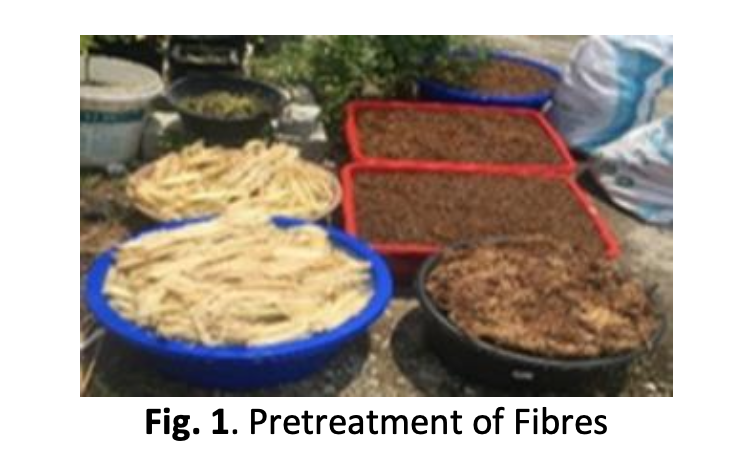Production of Roof Board Insulation Using Agricultural Wastes Towards Sustainable Building Material
DOI:
https://doi.org/10.37934/arfmts.99.1.6689Keywords:
Agricultural wastes, composite, insulationAbstract
Malaysia, like most other developing countries, is facing an increase in the generation of waste and accompanying problems with the disposal of this waste. A large number of biomass wastes were generated due to increased activity in the agricultural and agro-industrial sectors, which led to producing environmental hazards and waste management issues. On the other situation, the energy consumption to cool the indoor building environment is high due to the building being exposed directly to solar radiation throughout the daytime, which increases the temperature outside and inside the building. Most of the low-medium cost housing schemes were constructed using metal roof covering without providing a roof insulation layer which causes a rising in indoor temperature and creates uncomfortable surroundings. Moreover, existing materials for roof insulation in the market use inorganic synthetic materials that could harm human health. The study aims to investigate the potential use of agricultural wastes for the production of roof board insulation material that can provide economic value added to agricultural waste, reduce the environmental issue and provide eco-friendly, sustainable building material. In this study, these agricultural wastes are combined in different proportions of 50% individual fibres, such as sugarcane bagasse with coconut husk, empty fruit bunch with mesocarp fibre, coconut husk with empty fruit bunch, and sugarcane bagasse with mesocarp fibre. The sample was fabricated using the hot-press machine and went through various physical and mechanical testing, which involved thickness of swelling, modulus of rupture, and thermal conductivity. The finding showed that the mixed fibre of empty fruit bunch and mesocarp fibre achieved all the criteria such as density (427 <500kg/m3); thickness of swelling (19< 20%); modulus of rupture (514<800psi), thermal conductivity (0.0856<0.25 W/m.K) met with the standard requirement in every laboratory test conducted. The outcome of this study suggests that empty fruit bunch and mesocarp fibre are the potential materials for the production of roof board thermal insulation. However, modification of physical and mechanical properties of waste fibre is required to achieve superior performance and is ready to be provided in the market. This study is aligned with the government initiative for the growth of green building materials for sustainable development in the construction industry.
Downloads
































